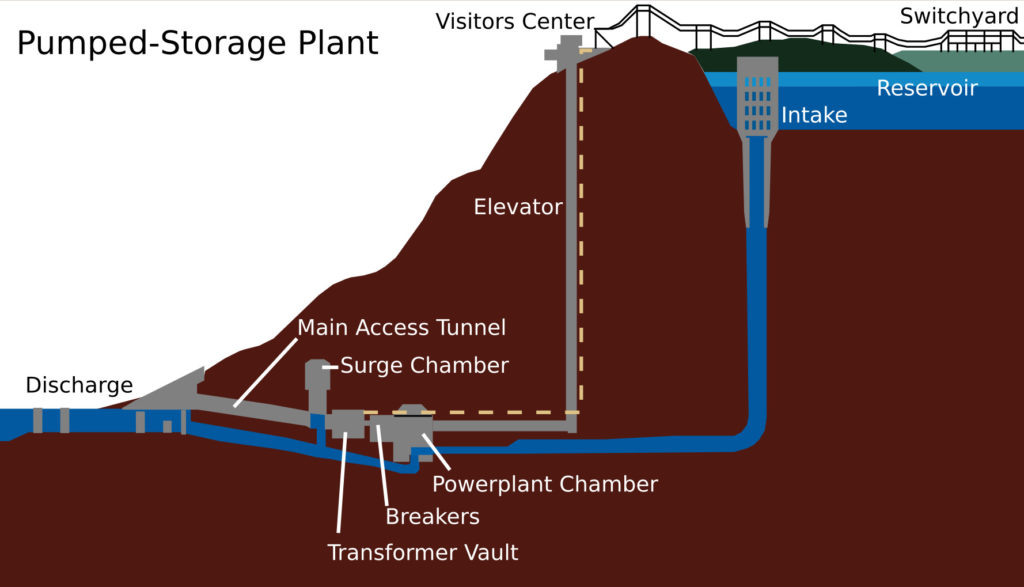Guest post by Brendon Harré.
Something that I have been following for a while now is pumped hydro. The idea is to build high altitude storage lakes so that water can be pumped up to them when there is a surplus of generation capacity and electricity prices are low. Then when electricity is in short supply and prices rise the pumps can be reversed to generate electricity. Pumped hydro is considered the cheapest method for doing large-scale energy storage; its ’round trip’ energy efficiency rate is about 80%.
In the New Zealand context, the biggest energy storage need is for our periodic ‘abnormal hydrological’ years, this is also known as the ‘dry year’ risk. Basically, if not enough rain falls on hydro lake catchments so that lake levels fall to the degree that the electricity market becomes concerned then wholesale electricity prices shoot up and fossil fuel generators (coal and gas) come on stream.
That is, coal and gas provide the backup energy supply for New Zealand’s electricity industry. In other countries with large hydro schemes they also have large amounts of energy storage within their hydro system. For instance, Norway’s dams store over a year’s worth of generation capacity. Unfortunately, in New Zealand it is only 6 weeks.
A hydrologist in New Zealand, Associate-Professor Earl Bardsley, has investigated a pumped hydro scheme for New Zealand that would provide a renewable energy storage option to cover the electricity industry’s dry year risk.
The Interim Climate Change Committee (ICCC), a ministerial advisory committee created by the New Zealand Government, has taken an interest in this proposal because it helps New Zealand transition to 100% renewable electricity supply. The committee recommended in its 2019 report a more in-depth study be done on pumped hydro from a technical, economic, cultural, environmental and social perspective.
The Minister of Energy, Megan Woods, released information stating she would report back to Cabinet before Christmas 2019 on who was to undertake this study if an in-depth pumped hydro study was to be progressed. This decision has not been made public.
I believe in transparent government so this decision should be publicly announced.
Brendon Harré has written a shorter piece titled “Build the Dam, Save the Planet“, explaining the motivation to build pumped hydro is the same motivation as past generations campaigning (successfully) to stop the dam at Lake Manapouri from being built.
Brendon also published on the Internet an extended comment from Prof Bardsley written for MBIE, in answer to the question: “What is the best way to meet resource adequacy needs as we transition away from fossil fuelled electricity generation and towards a system dominated by renewables?”

Leave a Reply